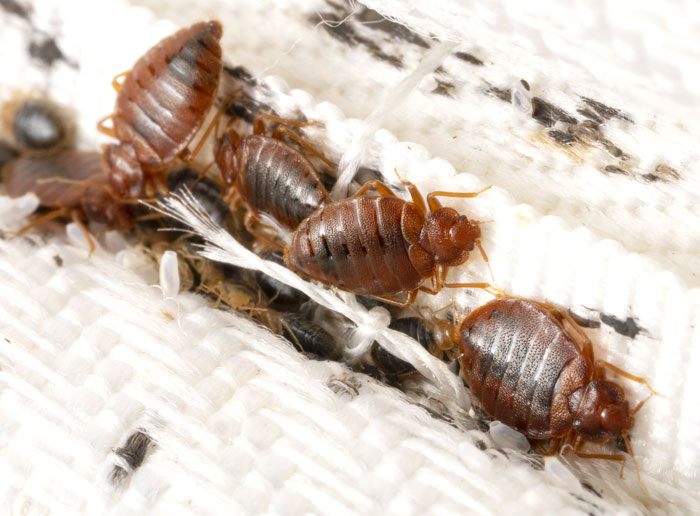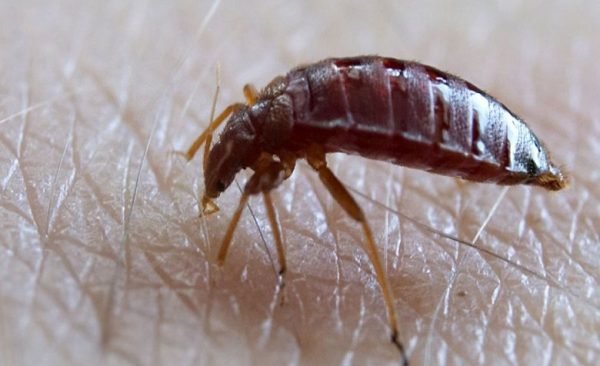Check Out the Different Kinds of Bug and Their Treatment Alternatives for Effective Administration
The management of parasites in both household and agricultural settings demands a detailed understanding of the different kinds that can get into these environments, in addition to the treatment options readily available for efficient control. From household rats that posture health and wellness risks to garden bugs that threaten crop returns, each classification requires a tailored technique. Understanding the subtleties of pest habits and the corresponding solutions is important; however, the concern continues to be: what are the most reliable strategies that not only resolve existing infestations yet also stop future occurrences?

Common Home Pests
Although family bugs can differ dramatically in type and habits, numerous share typical attributes that make them a hassle. Usual family bugs consist of rats such as mice and rats, insects like cockroaches and ants, and occasional invaders such as crawlers and flies. These parasites usually grow in settings that give very easy accessibility to shelter, water, and food, making homes especially vulnerable.
Rodents, as an example, are infamous for triggering structural damage and spreading out illness. They can nibble through electric cords, potentially resulting in fire risks. Pests like roaches are not only troubling yet can likewise trigger allergic reactions and bronchial asthma in sensitive people. Ants, while typically safe, can attack kitchen areas, rendering food resources unattractive.
Reliable parasite management begins with avoidance, which consists of securing entry factors, preserving sanitation, and using suitable storage space approaches for food. Recognizing the habits and qualities of these typical family parasites is important for efficient monitoring and keeping a healthy living atmosphere.
Garden Bugs and Their Influence
Yard parasites pose a considerable danger to the wellness and performance of plants, with some quotes recommending that they can create approximately 40% of plant losses in particular regions. These pests, that include bugs such as caterpillars, aphids, and beetles, in addition to nematodes, can bring upon serious damages by feeding on plant tissues, leading to stunted development, lowered returns, and endangered quality.
The effect of yard bugs expands past simple visual worries; they can interrupt ecological communities by modifying food web, influencing pollinators, and spreading out illness among plants. For example, parasites like the crawler mite can deteriorate plants, making them much more vulnerable to fungal infections. Moreover, intrusive species might outcompete native flora, bring about biodiversity loss.
Integrated Pest Administration (IPM) techniques, which combine biological control, social techniques, and targeted chemical applications, can offer lasting remedies. By understanding the certain pests and their habits, gardeners can carry out targeted therapies that not only shield their plants but likewise advertise a much healthier yard ecosystem.
Rats: Recognition and Dangers
Rodents are typical garden bugs that can position substantial risks to plant wellness and general ecological community stability. These little creatures, consisting of varieties such as rats, mice, and voles, are commonly recognized by view publisher site their sharp incisor teeth and durable bodies. Their hair pigmentation differs commonly, ranging from gray to brown, and they generally exhibit a long tail which aids in balance and agility.
The risks related to rodent infestations are multifaceted. They can create considerable damages to plants and gardens by gnawing on stems, roots, and fruits, which can lead to significant economic loss for gardeners and farmers. Secondly, rodents are infamous for their duty as vectors of different conditions, consisting of hantavirus and leptospirosis, which can be transferred to animals and humans. Their droppings and pee can infect soil and integrated pest management water sources, aggravating health and wellness dangers.
Additionally, rats can interrupt the all-natural balance of local ecosystems by completing with native wild animals for resources. Their burrowing behaviors can cause soil disintegration and destabilization of plant roots. Early recognition and understanding of rodent behaviors and dangers are critical for effective bug management.
Efficient Therapy Approaches
When managing rodent invasions, utilizing reliable therapy methods is vital for lessening damages and health risks. Snap catches and electronic traps supply a humane and fast way to remove rats, while adhesive traps can assist check activity degrees.
Secondly, bait stations consisting of rodenticides can be tactically put in areas of high rodent activity. These stations need to be tamper-resistant to make certain the security of non-target animals and youngsters. It is critical to choose the suitable bait kind, as rats can establish bait hostility otherwise altered periodically.
In addition to catches and lure, sealing entrance points can considerably minimize the possibilities of re-infestation. This entails checking and repairing voids in walls, doors, and home windows.
Finally, professional parasite control services can be helpful for substantial infestations. They have the proficiency, devices, and products essential for reliable elimination and can develop a customized management strategy. By executing these therapy methods, home proprietors can successfully deal with rodent concerns and safeguard their wellness and home.
Preventative Measures and Tips

Preserving sanitation is equally essential; ensure that food is stored in airtight containers and quickly tidy up crumbs or spills. Consistently disposing of waste and making sure that compost heap are managed properly can prevent insects from being attracted to your home.
Furthermore, consider landscape design techniques that discourage rodent habitation. Trim greenery and maintain mulch away from the structure of your building, as these can offer concealing areas for parasites.
Final Thought
Effective parasite administration demands a detailed understanding of various bug types and their details treatment alternatives. Tailored strategies for family pests, yard insects, and occasional intruders are necessary for boosting and minimizing threats control steps. By integrating efficient treatment methods with preventative methods, such as routine inspections and keeping cleanliness, the likelihood of problems can be substantially minimized. Eventually, an aggressive position on insect management fosters a healthier setting, protecting both agricultural and household spaces from pest-related best termite control difficulties.
Common household pests include rats such as rats and computer mice, bugs like cockroaches and ants, and occasional intruders such as spiders and flies.Rodents are common garden pests that can pose significant risks to plant wellness and total community security. Very early identification and understanding of rodent behaviors and risks are crucial for effective parasite monitoring.
Efficient pest management starts long prior to an infestation takes place, with aggressive steps that can considerably reduce the chance of rodent access and habitation.Efficient insect management demands a detailed understanding of various parasite types and their specific therapy options.
Comments on “Expert Pest Control Arlington VA: Comprehensive Solutions for Your Property”